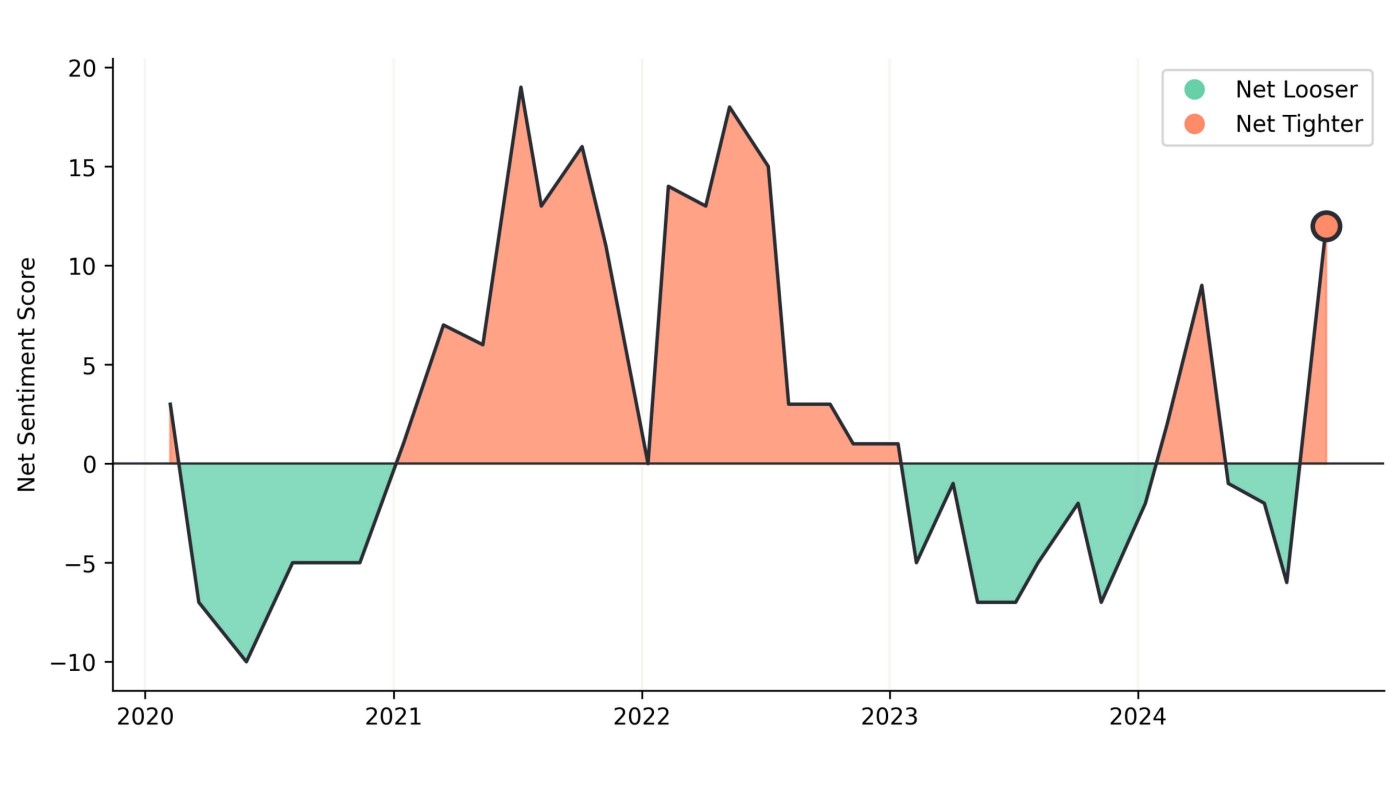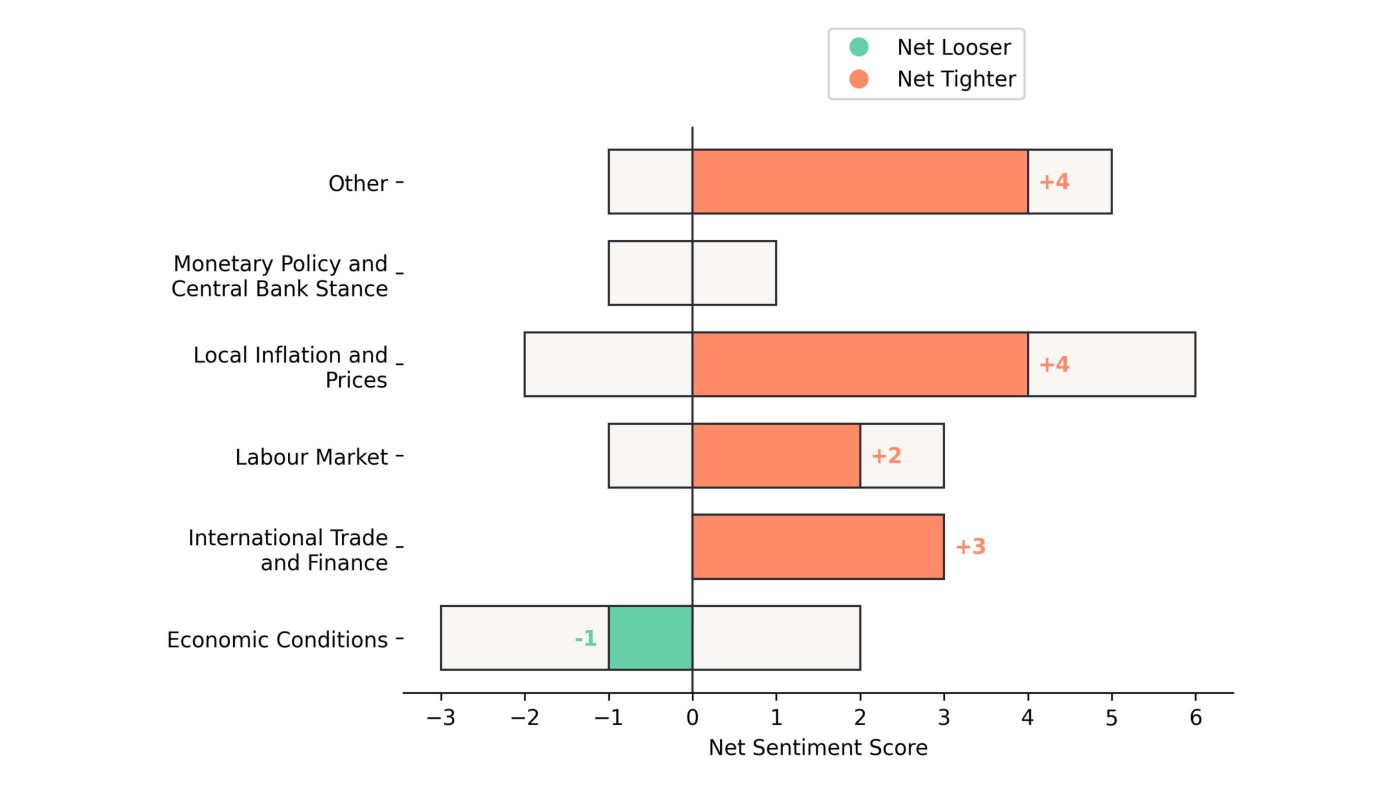
Martin Blum
Head of Desk Strategy and Capital Markets Development, RBI Group Capital Markets

Discover how RBI's advanced AI-driven central bank sentiment indicator provides a competitive edge in CEE and global markets.
The use of GenAI tools has proliferated over the last year, but so far, few institutions have implemented AI-driven analysis in a CEE central banking context. Together, RBI Group Capital Markets and RBI AI Center of Excellence have developed a cutting-edge central bank sentiment indicator to allow our institutional and corporate customers to stay ahead of the monetary policy curve in CEE/SEE as well as global markets.
Before digging deeper into the tool and how it can be utilized, we need to consider how central bank communication and specifically monetary policy statements have evolved over the years. Ever since the US Federal Reserve released the first post-decision policy statement in 1994, market participants have carefully studied central bank statements for clues to help foresee future changes in policy and interest rate direction. Since then, an ever-expanding list of central banks has released post-meeting policy statements, including across the CEE region, while in recent years statements have become increasingly nuanced.
The nuanced nature of central bank monetary policy statements presents a challenge even for seasoned observers. This means that, by now, GenAI-driven monetary policy statement evaluation is a ‘must-have’ in developed markets. It both improves efficiency and, just as importantly, produces a more robust quantitative output which can be plugged into other processes. A case in point is that Mercer’s 2024 “AI integration in investment management” global fund manager survey showed that circa 70% of investment managers were already or are planning to use AI to incorporate alternative data sets, develop forward-looking indicators and generate ideas. Taking it one step further, RBI Group’s cross-functional Capital Markets Division and AI Center of Excellence team has developed a cutting-edge central bank sentiment indicator, which is effective in analyzing Central, Eastern and Southern European central bank statements as well as ‘developed’ markets.
RBI Group’s GenAI-driven sentiment indicator takes the evaluation of central bank statements to the next level through a process that utilizes a strictly guided large language model. The model evaluates underlying policy nuances in central bank statements on a sentence-by-sentence level and produces a quantitative output in the form of central bank forward-looking sentiment indicators.
This is achieved through a smart matching algorithm that identifies comparable sentences across the latest publication against the previous one. Establishing this as the benchmark is necessary to reliably assess changes in the central banks’ sentiment for each sentence on each topic. The sentiment dimensions of our indicator are "looser" (i.e. "dovish" or lower interest rate) or "tighter" (i.e. "hawkish" or higher interest rate) shifts in monetary policy stance. Once a publication is fully labeled, the counts of hawkish and dovish sentences can be summed up to assess the overall sentiment shift for a CB publication or aggregated by macroeconomic topic.

It goes without saying that no analysis of central bank policy sentiment is foolproof and there will always be differences of opinion in interpretation. The fact that RBI’s central bank sentiment indicator provides a quantitative output nonetheless allows a strict evaluation of its output, both versus RBI’s monetary policy experts and compared to market moves. Here, accuracy ratios are promising:
RBI’s central bank sentiment indicator stands out for 4 key reasons:

Following each central bank monetary meeting and statement release across the seven countries currently covered, RBI distributes an email to eligible* clients that covers:
*Please ask your relationship manager or institutional sales coverage if you would like to receive the indicator updates.
AI usage in financial markets is developing rapidly. RBI Group continues to develop a broad set of tools to make effective decision-making easier for clients. Our central bank sentiment indicator is one example of this and expands the use of the ‘must-have’ GenAI central bank LLM statement analysis into the Central and Southern European realm.
Watch this space in terms of broadening the number of central banks analysed and utilizing their quantitative output to progressively develop a broader array of signals…
*Eligible client definition: currently distributed to eligible institutional and corporate clients in Austria, Belgium, Croatia, Czechia, Denmark, Germany, Hungary, Italy, Luxembourg, Netherlands, Slovakia, Slovenia, Spain, with other EU and non-EU countries set to be progressively added to the list.

Head of Desk Strategy and Capital Markets Development, RBI Group Capital Markets

Senior Data Scientist, RBI AI Center of Excellence

Head of Data & Solutions, RBI Group Capital Markets
Subscribe to Raiffeisen Insights. Get an e-mail with
the latest trends in the world of economics and business.